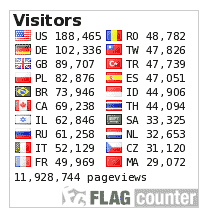Understanding Formative and Summative Assessment for EFL Teachers: Theoretical Reflections on Assessment for Learning.
Keywords:
Assessment, Formative, SummativeAbstract
The literatures showed that the important of assessment has brought so significance works and studies. Currently, the teacher’s conception and belief to conduct assessment being questioned because of its nature, the cheating habit among students while assessing summative kind of test becomes the roots of all the problems occurred during the classroom test. They, especially EFL teachers should not determine by the test as the only gear to measure learning outcomes, using formative as assessment for learning is better proposed and understood rather than spotlighting the assessment of learning. Dispute summative can someway use feedback for formative purpose, it seems the roles of the teachers would take so little function for students’ improvement. It is then suggested for EFL teachers, they should immense formative procedures over summative to enhance the learning target which has been previously shared with students. Eventually, if it is successfully offered and applied massively by teachers, the earlier problems found such as cheating, lower students’ grade, would be diminished, and positively change the learning behavior. In addition, will not possible to transform teachers’ conception and practice from being an “assessment of learning” into assessment for learning”. The formative teachers will always examine their students based on the dynamic situation of their students, they viewed every dynamic problem found during classroom teaching and learning could be as feedback for teaching improvement and re-designed their teaching method in the classroom.
Downloads
References
Brown, H. D. (2004). Language assessment: Principle and classroom practices. White Plains, NY: Longman
Brown, H. D., Abeywickrama, P. (2010). Language assessment: Principle and classroom practices. NY: Pearson Longman
Garrison, C., &Ehringhaus, M. (2007).Formative and summative assessments in the classroom.Association for Middle Level Education.Retrieved from http://www.amle.org/Publications/WebExclusive/Assessment/tabid/1120/Default.aspx
Ghiatau, R., Diac, G., &Curelaru, V. (2011).Interaction between summative and formative in higher education assessment: Students’ perception.Procedia Social and Behavioral Sciences,11, pp. 220–224
Gulikers, J. T. M., Biemans, H. J. A, Wesselink, R., and Van der Wei, M. (2013).Aligning formative and summative assessment: A collaborative action research challenging teacher conceptions.Studies in Educational Evaluation, 39, pp. 116-124
Harlen, W., & James, M. (1997).Assessment and learning: Differences and relationships between formative and summative assessment.Assessment in Education: Principles, Policy & Practice, 4(3), pp. 365-379
Hughes, A. (1989). Testing for language teachers. NY: Cambridge University Press
Lam, R. (2013). Formative use of summative tests: using test preparation to promote performance and self-regulation. Asia-Pacific Edu Res,22, pp. 69–78. doi: 10.1007/s40299-012-0026-0
Marshall, B. (2011) Testing English: Formative and summative approaches to English assessment. London: Continuum International Publishing Group.
Meyer, H, Wilhelm. (2009). When you just get a mark and a nasty comment, what's that called? Summative assessment: Creating an enabling environment for formative assessment.Southern African Linguistics and Applied Language Studies, 27(2), pp. 215-228
Misanchuk, E. R. (1978). Descriptors of evaluations in instructional development: beyond the formative-summative distinction.Journal of Instructional Development, 2(1), pp. 15-19
Northern Illinois University, Faculty Development and Instructional Design Center. (n. d). Formative and Summative Assessment. Retrieved from Retrieved July 22, 2015, from https://www.azwestern.edu/learning_services/instruction/assessment/resources/downloads/formative and_summative_assessment.pdf
Sardareh, S.A., Saad, R, M. (2012). A sociocultural perspective on assessment for learning: The case of a Malaysian primary school ESL context, Procedia-Social and Behavioral Sciences, 66, pp. 343-353
Sardareh, S. A., Saad, R, M. (2013). Defining assessment for learning: A proposed definition from a sociocultural perspective, Life Science Journal, 10(2), pp. 2493- 2497
Sardareh, S. A., Saad, R, M. (2013). Malaysian primary school ESL teachers’ questions during assessment for learning, English Language Teaching, 6(8), pp. 1-9.doi: 10.5539/elt.v6n8p1
Taras, M. (2005).Assessment: summative and formative - Some theoretical reflections.British Journal of educational Studies, 53(4), pp. 466-478. University of Sunderland, Blackwell Publishing Ltd
Taras, M. (2009).Summative assessment: the missing link for formative assessment.Journal of Further and Higher Education, 33(1), pp. 57-69. doi: 10.1080/03098770802638671
Wei Wei. (2015). Using summative and formative assessments to evaluate EFL teachers’ teaching performance. Assessment & Evaluation in Higher Education, 40(4), pp. 611-623. doi: 10.1080/02602938.2014.939609
Wholey, J. S. (1996). Formative and summative evaluation: Related issues in performance measurement.Evaluation Practice, 17(2), pp. 145-149
Published
How to Cite
Issue
Section
This is an open-access article distributed under the terms of the Creative Commons Attribution-ShareAlike 4.0 International License which permits unrestricted use, distribution, and reproduction in any medium. Users are allowed to read, download, copy, distribute, search, or link to full-text articles in this journal without asking by giving appropriate credit, providing a link to the license, and indicating if changes were made. All of the remixes, transform, or build upon the material must distribute the contributions under the same license as the original.











